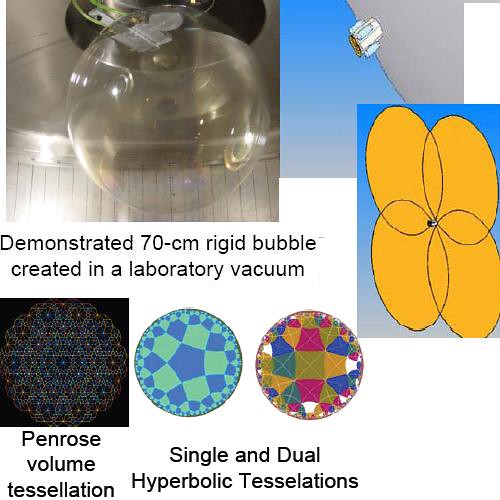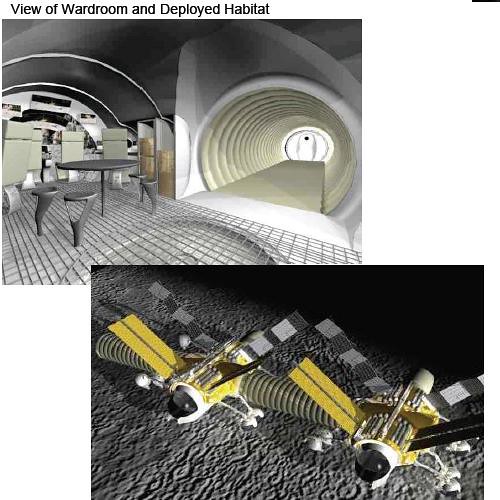
A single bubble can be 1 meter in earth gravity, 100 kilometer in low earth orbit or 1000 kilometers in deep space. Foams made of many bubbles could be far larger in size.
NOTE: the size of a 1000 kilometer bubble is nearly the size of Charon, the moon of Pluto. Charon is 1200 kilometers in diameter. Saturn’s moon Tethys is 1050-1080 kilometers in diameter Ceres the largest object in the asteroid belt is 970 kilometers in diameter. A single tesselation foam (like in the picture) of 1000 kilometer bubbles would be about the size of Earth’s moon. A Penrose tesselation like the one in the picture of 1000 kilometer bubbles would be in between the size of Neptune or Saturn. A Tesselation foam of 100 kilometer bubbles in earth orbit could form an object the size our existing moon or larger.
Metal can be evaporated to coat the inside of the bubble for reflective sails and telescopes.
The bubble system for making structures is compatible with the hypertelescope, New Worlds Imager and Maxim x-ray telescope and solar sails.
Large structures can make telescopes that are millions of times more powerful than the Hubble Space telescope and solar sails that are light weight and fast.

Extreme Expeditionary Architecture: Lightweight Lunar RVs that can be connected into a larger mobile base camp. Let 8 move around many miles and explore a lot of the moon. the two RV’s could be deployed in one launch payload.
Hopefully NASA’s Innovative Partnership program can pick up where the Nasa Institute for Advanced Concepts left off and continue this kind of innovative work.
Further reading on space propulsion and colonization on advancednano:
The prior article about Devon Crowe’s space bubble concepts.
Prior article on the state of solar sails
Prior article on putting the brakes on laser mirror solar sails
Article on laser mirror solar sails for going to Mars
Article on laser mirror solar sails and photonic propulsion
Colonizing space going slower and closer
Colonizing space going lighter
Building new worlds become the greatest generation

Brian Wang is a Futurist Thought Leader and a popular Science blogger with 1 million readers per month. His blog Nextbigfuture.com is ranked #1 Science News Blog. It covers many disruptive technology and trends including Space, Robotics, Artificial Intelligence, Medicine, Anti-aging Biotechnology, and Nanotechnology.
Known for identifying cutting edge technologies, he is currently a Co-Founder of a startup and fundraiser for high potential early-stage companies. He is the Head of Research for Allocations for deep technology investments and an Angel Investor at Space Angels.
A frequent speaker at corporations, he has been a TEDx speaker, a Singularity University speaker and guest at numerous interviews for radio and podcasts. He is open to public speaking and advising engagements.


Comments are closed.